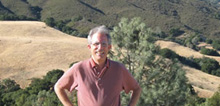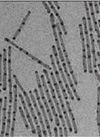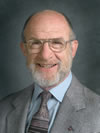Today
7 a.m. to 1 p.m.
Philanthropy Club
Red Cross Blood Drive
Bldg. 2-100B
9 a.m.
EHS 280
Laser Safety
Bldg. 70A-3377
1 p.m.
EHS 135
Earthquake/Wildland Fire Safety
Bldg. 48-109
1:15 p.m.
EHS 735/EHS739
Bloodborne Pathogen/Biosafety Training
Bldg. 70A-3377
Tomorrow
9:30 a.m.
EHS 604
Hazardous Waste Generator
Bldg. 70A-3377
11 a.m.
EHS 622
Radioactive/Mixed Waste Generator
Bldg. 70A-3377
Noon
Dance Club
Samba Practice
Bldg. 51 Lobby
Noon
Public Affairs
Summer Lecture: The ATLAS Experiment: Mapping the Secrets of the Universe
Michael Barnett
Bldg. 50 Auditorium
12:15
Yoga Club
Class with Chris Hoskins
Bldg. 70-191 |
|
 |
|
|
 |
|
| |
Breakfast: Roasted Veggie and Swiss Omelet with Toast and Hash Browns
Tomorrow's Breakfast: Ham & Cheddar Scramble with Hash Browns
Cultural Cuisine: Taco Salad
Pizza: Pesto with Roasted Eggplant
Deli: Smoked Turkey, Swiss and Marmalade Wrap
Grill: Fried Chicken Wrap with Swiss Cheese, Lettuce, Tomato & Honey Dijon Spread
Carvery: Hungarian Goulash with Egg Noodles
| B'fast: |
6:30
a.m. - 9:30 a.m. |
| Lunch: |
11
a.m. - 1:30 p.m. |
Full
menu  |
| |
|
|
|
 |
 |
 |
|
| Bailey geocaches in Mt. Diablo State Park |
|
Geocaching, Nano Wizard,
Government Update in View
This month’s issue of The View, Berkeley Lab’s monthly employee newspaper, features stories on Computational Research Division mathematician David Bailey’s love of geocaching, a new outdoor treasure-hunting sport. Also included is a profile of Materials Science’s Pei Dong Yang, who’s been dubbed a “nanoscience wizard” by his colleagues, a Washington report on the pending appropriations bill, and a photo spread on the installation of the ATLAS silicon pixel detector at CERN. Copies are available in most building mail rooms, as well as the cafeteria lobby and the Building 65 bus stop. Or go here to read it online.

|
 |
|
 |
Using Colloids To Change
Nanorod’s Stripes
|
|
|
|
 |
 |
|
|
| Striped nanorods |
|
|
|
“Striped" nanorods — crystalline materials only a few molecules in thickness and made up of two or more semiconductors — are highly valued for their potential to serve in a variety of nanodevices, including transistors, biochemical sensors and light-emitting diodes (LEDs). Until now the potential of striped nanorods has been limited by the relatively expensive and exacting process required to make them. That paradigm may be shifting. A team led by Berkeley Lab materials scientist Paul Alivisatos has discovered a way to make striped nanorods in a colloid — a suspension of particles in solution. Previously, striped nanorods were only made through epitaxial processes. Full story. |
 |
|
 |
Free Pick-Up
Of Excess Items
The Lab’s Facilities Transportation Group will pick up excess items for two weeks, Monday, Aug. 6 through Friday, August 17, free of charge. When possible, pickups should be arranged through your Division Property Representative, who can provide the Equipment Movement Tags that must accompany excess items. Requests can also be made via the Work Request Center. No account number is needed, just type in �August Clean-Up� in the description box and include a list of pick-up items and their DOE numbers if tagged. Note any items over 500 pounds (they will need special handling and extra time). Contact your Division Safety Liason for pick-up of hazardous waste or computers.
 |
 |
|
 |
|
 |
Book Chronicles History
Of Particle Accelerators
|
|
|
|
 |
 |
|
|
| Sessler |
|
|
|
Former Berkeley Lab Director Andrew Sessler, currently with the Accelerator and Fusion Research Division, has coauthored a new book that for the first time chronicles the development of particle accelerators from the invention of electrostatic accelerators, linear accelerators, and the cyclotron to the colliders of today. The book, “Engines of Discovery: A Century of Particle Accelerators,” also addresses accelerators employed as sources of x-rays, for medical purposes, and in industrial applications. The book identifies the crucial discoveries that have driven the field and gives the reader insight into the people who made these discoveries as well as the methods they used. More on the book is available here.
 |
 |
|
|
 |
|
|
|
|
 EMERGENCY INFO EMERGENCY INFO |
 |
Emergency: Call x7911
Cell Phones: Call 911
Non-emergency Incident Reporting: Call x6999
SECON level 3
More Information |
 |
|
|
 |
|
|

